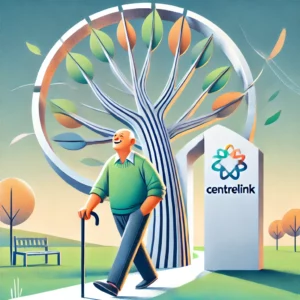How to remove a Beneficiary from a Family Trust
Remove a Centrelink person from your Family Trust
Centrelink may not be happy that a person on Centrelink may potentially get a distribution from someone else’s Family Trust. To pacify Centrelink this Deed of Variation agrees that the current Trustee and Appointor, and future Trustees and Appointors, will never distribute to the person on Centrelink in the future.
The Deed of Variation to exclude the beneficiary helps prove that the person on Centrelink will never get anything out of the trust.
Ex-spouse still in your Family Trust? Remove your ex-spouse from your Family Trust
Trust
The Family Law property settlement is over. The dust has settled. But you find that your ex is still a potential beneficiary in ‘your’ Family Trust. This Deed of Variation confirms the:
- current Trustee and Appointors, and
- future Trustees and Appointors
will never distribute to your ‘ex’.
Can you remove a Beneficiary from your Family Trust?
All Australian trusts must have three things:
- Trust Assets, e.g. cash, shares, property, intellectual property
- Trustee – holds only the ‘legal’ title of the Trust Assets – owner only in name
- Beneficiaries – true or equitable owners of the Trust Assets
You control the trust and no longer want a certain beneficiary to ever get any income or capital out of your Family Trust. You are excluding this person. This Deed of Exclusion is for that purpose.
Fettering the Trustee’s Discretionary Power to exclude a Beneficiary in your Family Trust
The trustee of a family trust, working under the direction of the appointment, can distribute the funds to any of the beneficiaries. However, this Deed of Variation ‘fetters’ that discretion. It is no longer possible to distribute to the Excluded Beneficiary.
To increase the likelihood of this Deed of Variation applying, we also seek to amend the Family Trust Deed (in the same Deed of Variation) in three additional ways. We require you to confirm:
1. Your current Appointors (controllers) and change them (if required)
2. Your Backup Appointors confirm or change them (as required)
3. Trustee, you confirm the current Trustees, or you can change the Trustee
Family Trust Update – Exclude a Beneficiary from a Family Trust
The Family Trust Update to get rid of unwanted Beneficiaries does five things:
- excludes someone as a beneficiary of a Family Trust
- confirms or changes your Trustees
- confirms or changes the Appointors and Guardians
- confirms or changes your Back-up Appointors (these are the people that control the Family Trust after you die)
- fully updates your Trust Deed (rules)
Firstly, remove a Beneficiary from a Family Trust
Firstly and primarily, the Deed of Variation seeks to remove a person from your Family Trust. This is so that they can no longer get anything from your Family Trust.
While the Appointor is more independent and powerful, the trustee of your Family Trust has a duty to act responsibly and in good faith: Gisborne v Gisborne (1877) 2 App Cas 300. The trustee must take care that it does not breach its duties. Or the court can wind back the removal of the Beneficiary: Campbell v T L Clacher No 2 [2019] QSC 218. See, for example, Mandie v Memart Nominees [2020] VSCA 281.
Secondly, you can change the Trustee of your Family Trust
As well as excluding some people, you may wish to change the Trustee of your Family Trust. This is because, for example, you may no longer like the Trustee.
Check with your Accountant to see whether there is any transfer (stamp) when you update the Trustee of a Family Trust, especially if you are in New South Wales.
 Thirdly, confirm or update the Appointor (controller)
Thirdly, confirm or update the Appointor (controller)
The Appointor controls the trust. It can hire and fire the Trustee. Appointors change for many reasons. People may wish to retire as an Appointor. Perhaps you would like to add your new spouse as an additional Appointor. As well as excluding a Beneficiariy, this Deed of Variation:
-
- allows the current Appointors and Guardians to retire or be removed, if dead; and
- confirms those current Appointors who remain as Appointors appoint any new Appointors
Fourthly, confirm or change your Backup Appointors
After the Appointors are all dead, the Backup Appointors take control of your Family Trust.
This Deed of Variation and doing the above allow you to confirm or change who you wish to control the Family Trust after you die.
Fifthly, the Family Trust is updated for the latest taxation and legal requirements – as well as removing the Beneficiary
Finally, the Family Trust Update does the above four things and also updates and improves your Family Trust rules.
Does the Family Trust deed allow you to Remove a Beneficiary?
All trust deeds are different. Read your trust deed, as well as any amending deeds. Ensure that this Deed of Variation is authorised and allowed by the current Family Trust Deed. Legal Consolidated does not give advice on this.
This Deed of Variation to get rid of a Beneficiary in a Family Trust assumes:
- that the Appointor, Guardian, Principal, Protector, or similar person holding power (Controller) has the power to do so.
- See Mandie v Memart Nominees Pty Ltd [2020] VSCA 281 and Jordan v Goldspring (No 2) [2021] NSWSC 215.
- that no other consent is required from anyone to update the Family Trust, E.g. the family court, if you are divorcing, has ‘given’ you sole control of your Family Trust.
- the trustee consents to the Deed of Variation. The Trustee signs both the Deed of Variation and the minutes.
- the current Appointors consent to the Deed of Variation. The current Appointors sign the Deed of Variation and the minutes.
- the Family Trust deed allows these changes, or you have a Court order allowing you to do so.
- it is morally correct and supported in the best interests of the Family Trust that the person be excluded as a Beneficiary.
- See Campbell v T L Clacher No 2 Pty Ltd & Ors [2019] QSC 218.
- The Trustee has no ulterior or improper purpose.
- See Curwen v Vanbreck Pty Ltd [2008] VSC 338, [71].
- each party signing the Deed of Variation is of sound mind and has a doctor’s certificate to confirm this (which is kept with the Deed of Variation).
- each party signing the Deed of Variation is doing so with full knowledge without any duress or pressure from family members or other people.
Check with your accountant and financial planner to ensure you comply with the above.
To learn about how a Family Trust operates, watch this free training course:
Advanced Family Trust Training Course – Free
For more legal advice, telephone us. We are a law firm. We can help you answer the questions. But start the free Building process BEFORE you contact us. Read the free hints. Educate yourself first.
Does this document also remove ‘foreigners’ for land tax and stamp duty?
No. If your Family Trust owns land, then build this document to remove foreigners and stop the penalty taxes on stamp duty and land tax.
Cases to consider when you want to remove a Beneficiary from a Discretionary Trust
These are relevant cases that we considered:
- Lainson v Lainson [1854] EngR 872
- Tompkins (1931) 44 CLR 546; [1931] HCA 8
- Wells [1930] NSWStRp 19; (1930) 30 SR (NSW) 150
- Dougharty [1935] VicLawRp 39; [1935] VLR 333
- Flower’s Settlement [1957] 1 WLR 401
- Jones v Dunkel [1959] HCA 8; (1959) 101 CLR 298
- Dawson’s Settlement [1966] 1 WLR 1456
- Buckle [1998] HCA 4; (1998) 192 CLR 226
- Breckler (1999) 197 CLR 83; [1999] HCA 28
- Cachia [2000] FCA 161
- Hamersley v Newton (2005) 30 WAR 568; [2005] WASC 221
- Aon (2009) 239 CLR 175
- Karger v Paul [1984] VicRp 13; [1984] VR 161
- Wareham v Marsella [2020] VSCA 92
Exclude a Beneficiary from a Family Trust – Tool kit
Why update a Family trust to get rid of a Beneficiary?
- Family Trust Deed – watch the free training course
- Family Trust Updates:
- Everything – Appointor, Trustee & Deed Update
- Deed ONLY – only update the Deed for tax
- Guardian and Appointor – only update the Guardian & Appointor
- Change the Trustee – change human Trustees and Company Trustees
- The company as Trustee of Family Trust – only for assets protection?
- Bucket Company for Family Trust – tax advantages of a corporate beneficiary
How to clean up a Unit Trust structure
- Unit Trust
- Unit Trust Vesting Deed – wind up your Unit Trust
- Change Unit Trust Trustee – replace the trustee of your Unit Trust
- Company as Trustee of Unit Trust – how to build a company designed to be a trustee of a Unit Trust
Fixing up partnerships and company structures
- Partnership Agreement – but what about joint liability?
- Incorporate an Australian Company – best practice with the Constitution
- Upgrade the old Company Constitution – this is why
- Replace lost Company Constitution – about to get an ATO Audit?
How to structure Service trusts and Independent Contractor Agreements
- Independent Contractor Agreement – make sure the person is NOT an employee
- Service Trust Agreement – operate a second business to move income and wealth
- Law firm Service Trust Agreement – how a law firm runs the backend of its practice
- Medical Doctor Service Trust Agreement – complies with all State rules, including New South Wales
- Dentist Service Trust Agreement – how dentists move income to their family
- Engineering Service Trust Agreement – commonly engineers set up the wrong structure
- Accountants Service Trust Agreement – complies with ATO’s new view on the Phillips case

